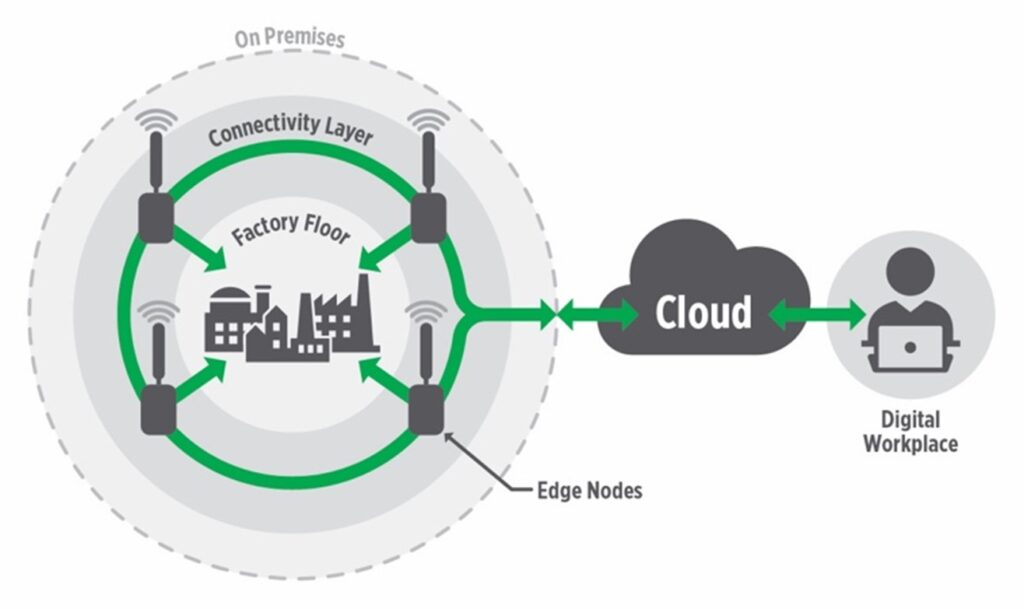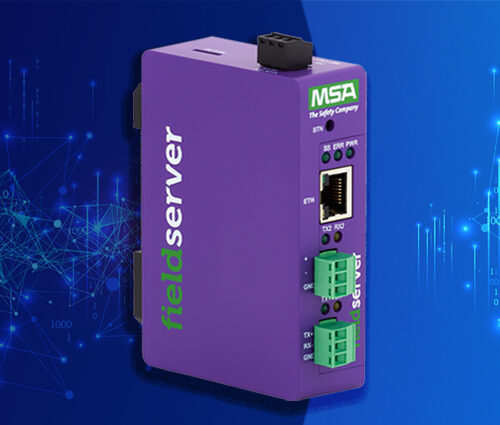
Although edge computing is not new, it has gained a whole bunch more traction in recent years; and it’s expected to continue this growth trend for years to come. In fact, not that long ago Gartner predicted that 75% of enterprise-generated data will be created outside of centralized data centers by 2025.¹ It looks like that prediction is right on target.
So, what makes edge computing so important to the Industrial Internet of Things (IIoT)?
It’s simple: Edge computing allows organizations to handle data as closely to the source as possible. What that means is that companies can more quickly generate actionable insights in real time to improve efficiency and productivity.
Examples of edge computing solutions include Software as a Service (SaaS) platforms, automation gateways, routers, and wide area networks (WANs).

Edge computing allows organizations to establish systems that are independent from a centralized data center, thereby enabling faster data collection, analysis, and on-the-spot troubleshooting.
Data, Data, and More Data
In today’s environment, data is king. IoT devices, on the other hand, are the royal staff in this analogy, working hard at generating all-important data. But data is nothing until it’s processed, distributed, and applied.
Distribution can be time consuming and expensive, depending on how it’s done. With edge computing, instead of every single piece of data being uploaded to a centralized location or the Cloud, only relevant and meaningful data is transmitted.
To illustrate, here’s an example:
Imagine there are three energy meters, each generating their own data sets. It’s unlikely that an end user would want to know every detail behind every piece of data from each meter—especially if what the end user really wanted to know is the total amount of energy expenditure from all three meters.
That’s where an edge computing solution like MSA FieldServer™ comes in.
FieldServer is an edge device designed to securely Cloud-enable energy metering equipment, building management systems, and industrial automation operations. Our edge computing solution accelerates the capture, upload, and normalizing of relevant data at the appropriate time, delivering it in a format that makes more sense to the end user. Even better, FieldServer enables permissions-based remote access to the Cloud via mobile device from any location, whether that location is in a different state or another country halfway around the world.
Perhaps the biggest benefit of FieldServer gateways is our 20+ years of knowledge and experience handling over 144 different protocols. We’ve proven our ability to gain data that we can then manipulate using our edge device. In fact, we’re so confident in FieldServer as an edge device that we use it ourselves in our FGFD solutions.
Edge Security
Obviously, edge computing has many merits. It’s important to also consider edge computing’s vulnerabilities, too. Among those vulnerabilities? Hacking. As we all know now, there have been cybersecurity events that occurred as a result of unauthorized entry through an HVAC or other automation system.
Like network and Cloud architectures, edge computing devices, too, must be properly protected using these cybersecurity best practices:
- Develop and implement access control policies such as zero trust, as well as user authentication controls and credentials to keep unauthorized users out.
- Look for solutions that have built-in device security (like FieldSafe) to protect endpoints.
- Ensure that the Cloud is secured with such technologies as encryption to safeguard sensitive data.
- Adopt a proactive multi-layered defense strategy, including current security standards to minimize exposure.
- Ask device manufacturers about their third-party penetration testing, which helps ensure that devices keep up with ever-changing cybersecurity threats and tactics.
More Edge Computing Coming Your Way…
Of course, there’s a lot more to say on the topic of edge computing and edge security. And we’ll be doing just that when we sponsor edge computing webinars in the summer of 2023. To be among the first to register for our edge computing webinars, check back here on the blog in the coming months.
Sources
- Gartner.com. “What Edge Computing Means for Infrastructure and Operations Leaders.” Retrieved 13 March 2023. (https://www.gartner.com/smarterwithgartner/what-edge-computing-means-for-infrastructure-and-operations-leaders)



